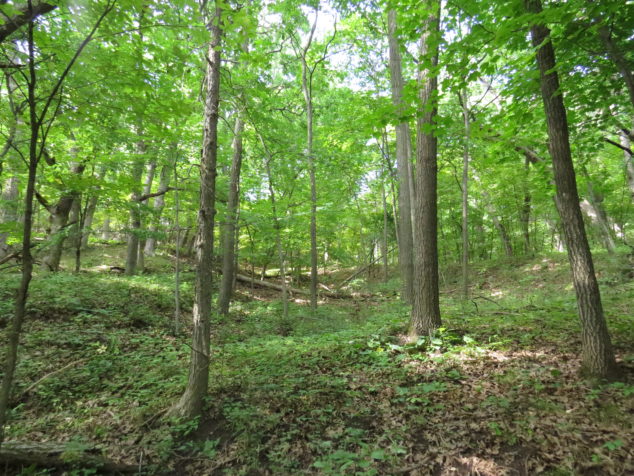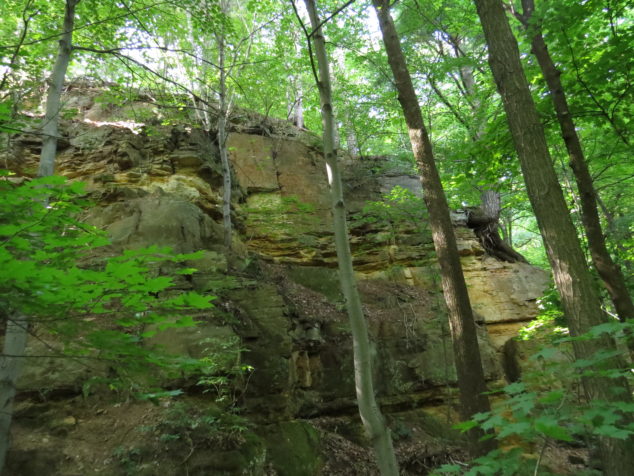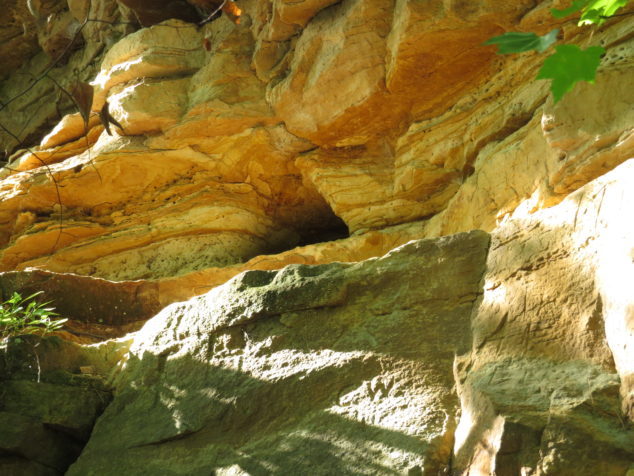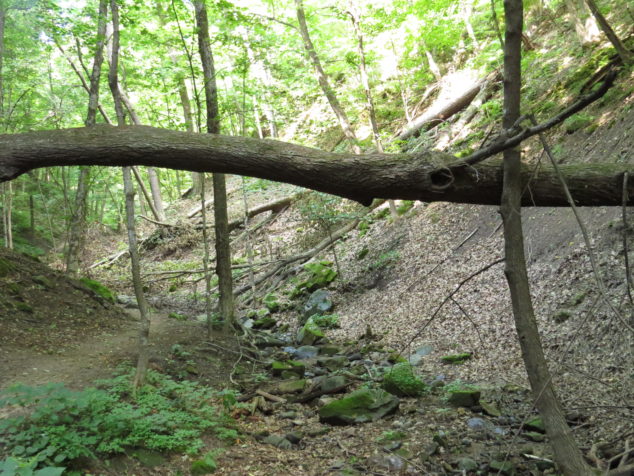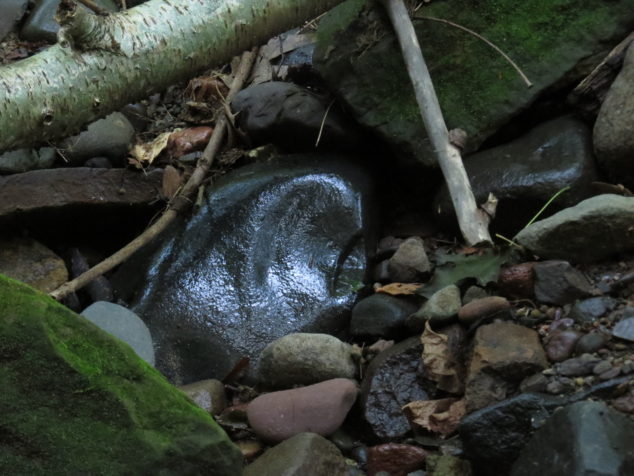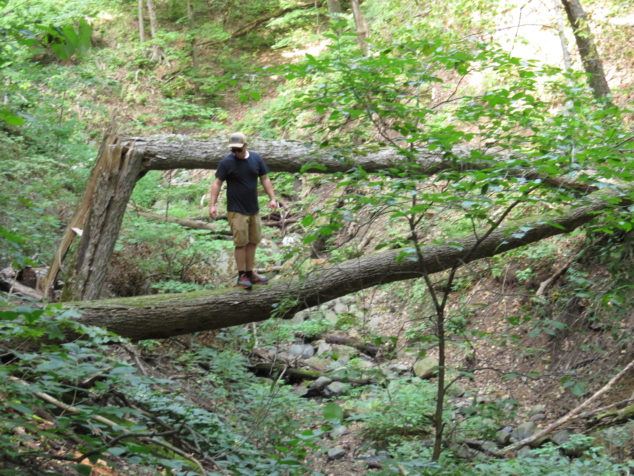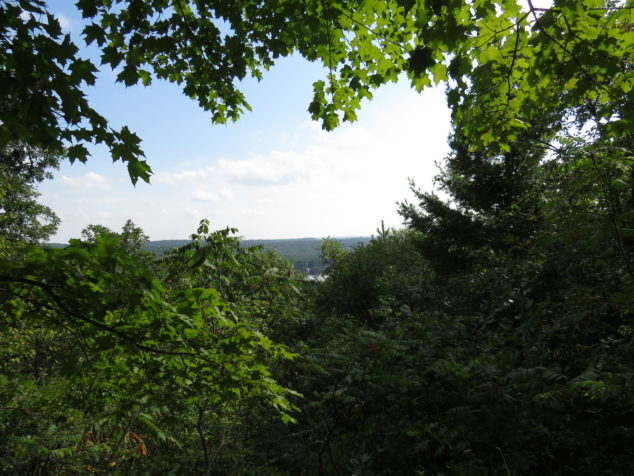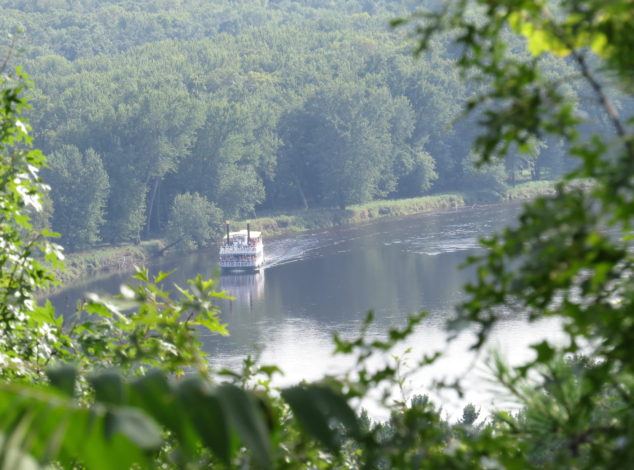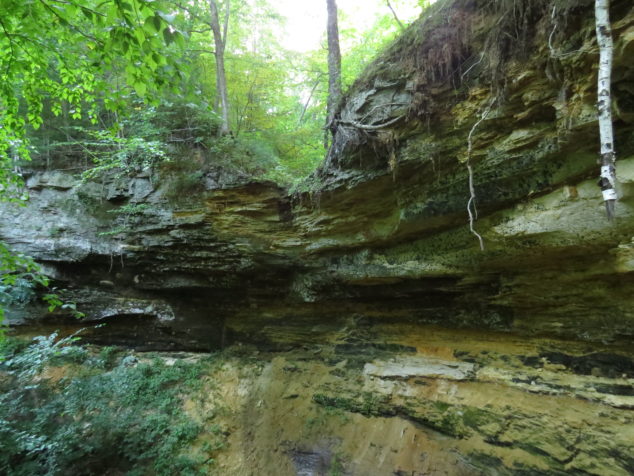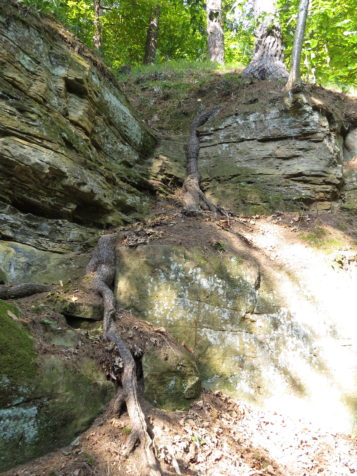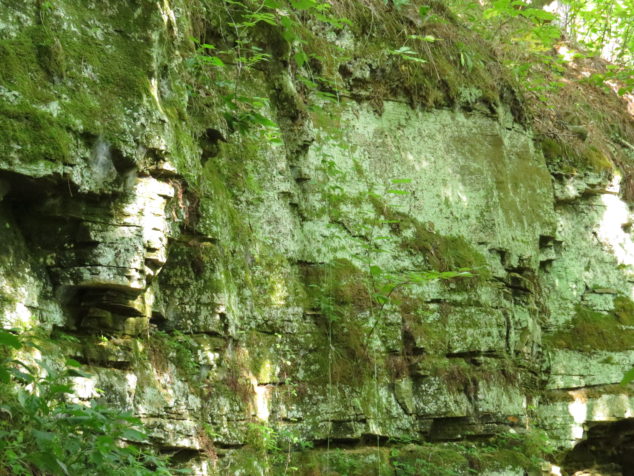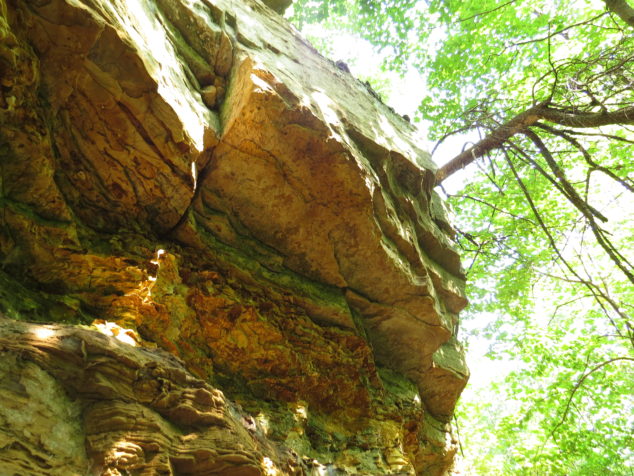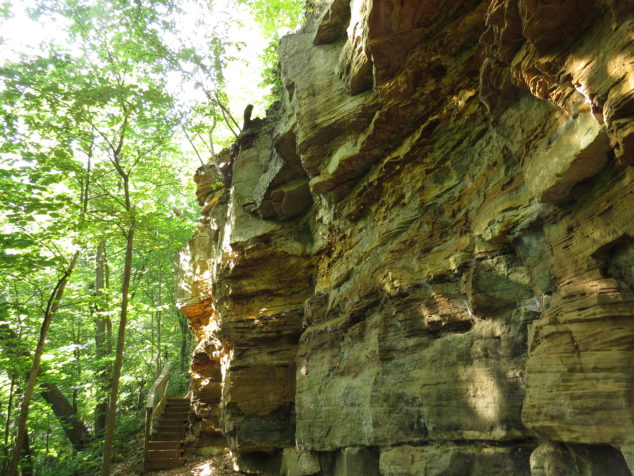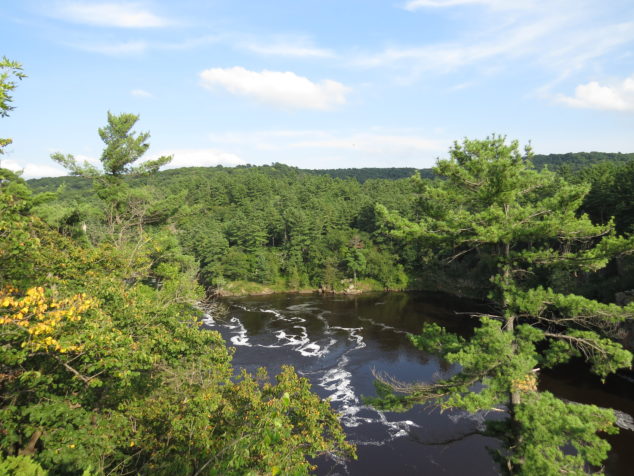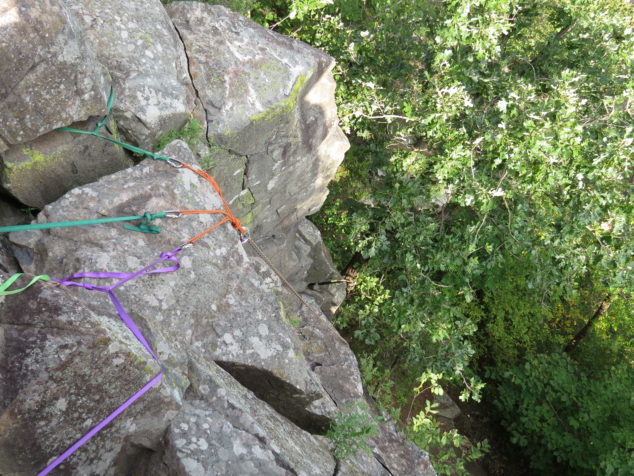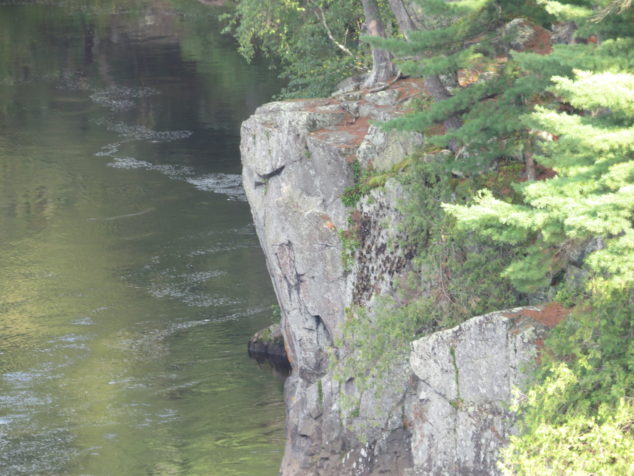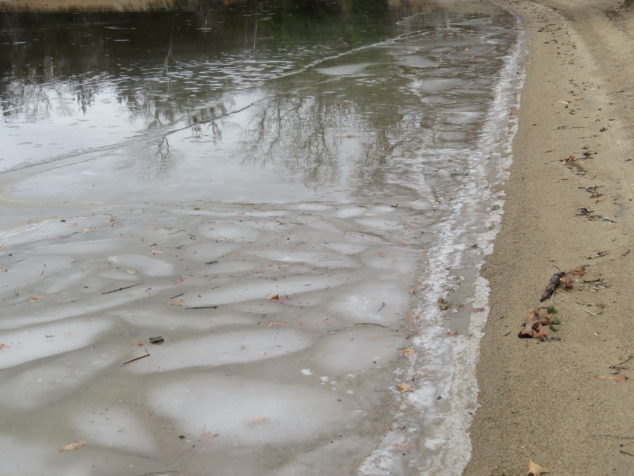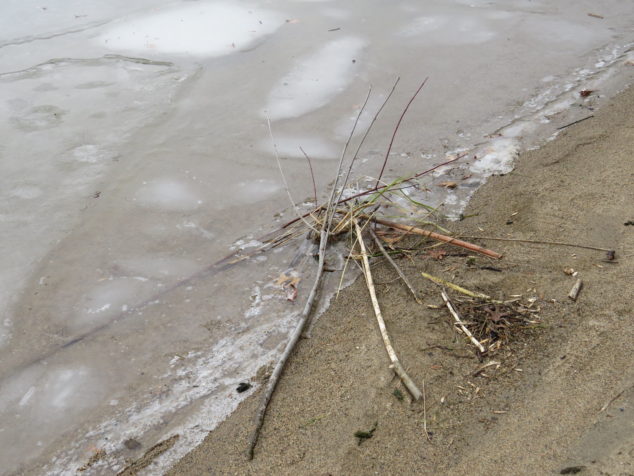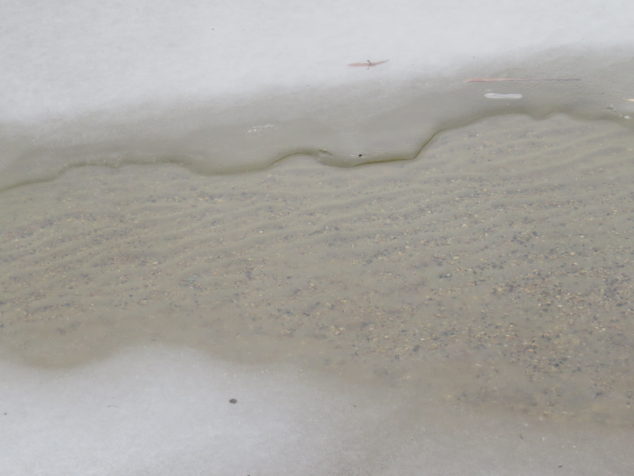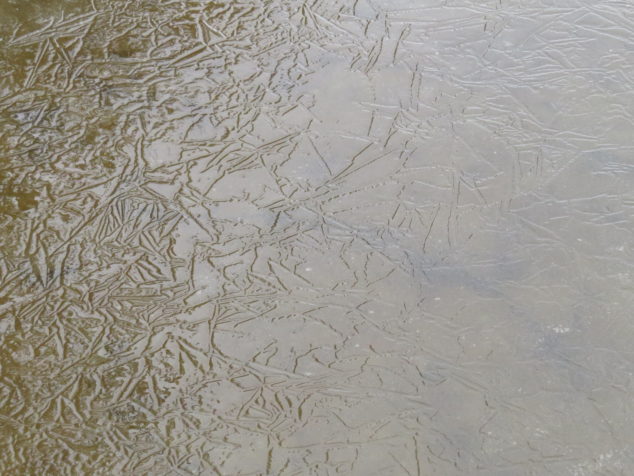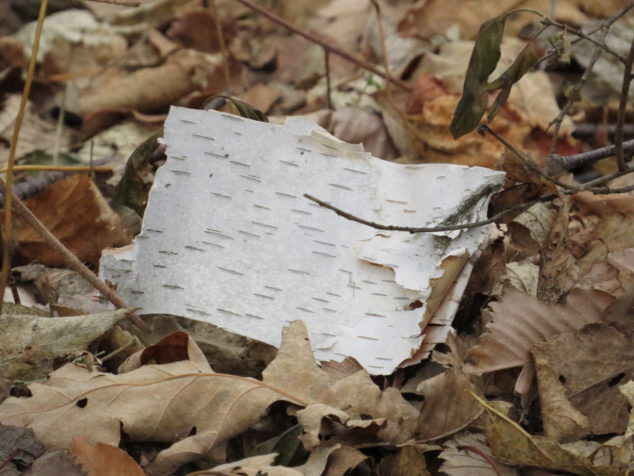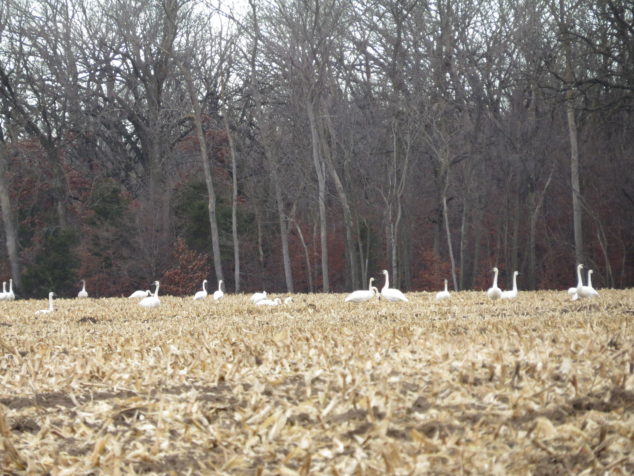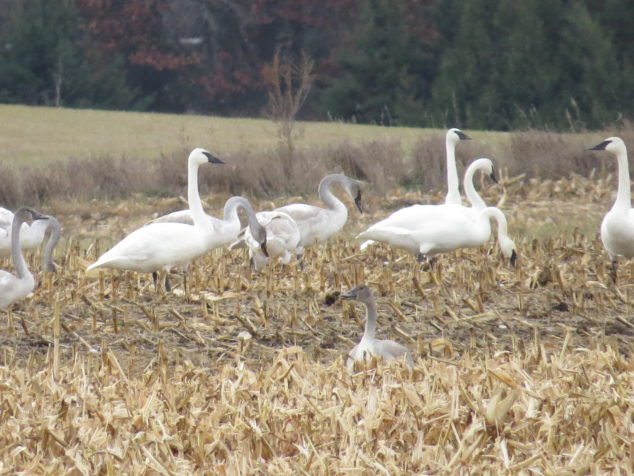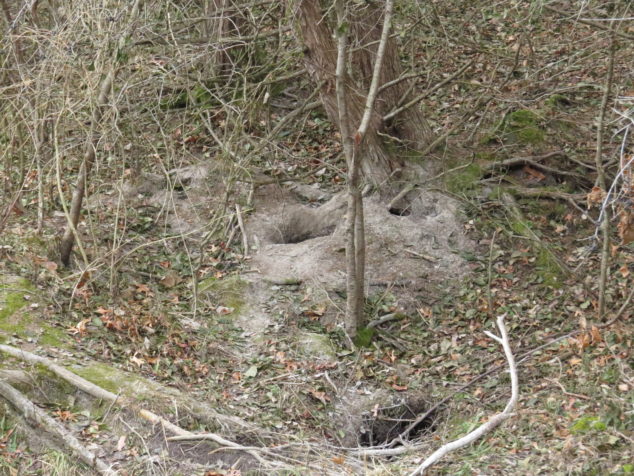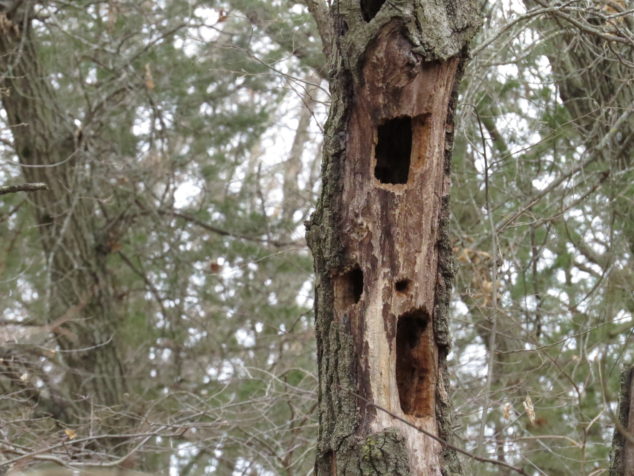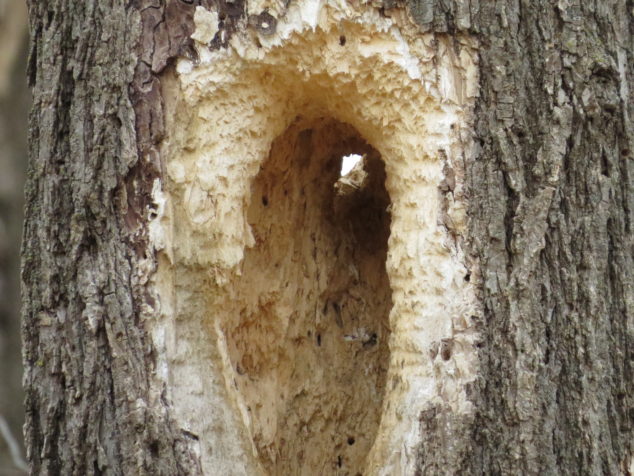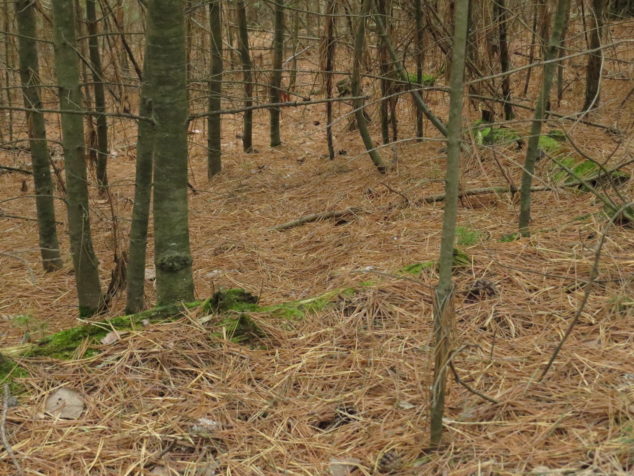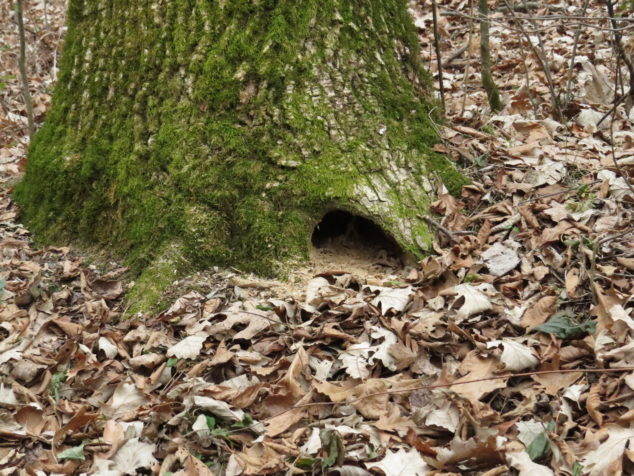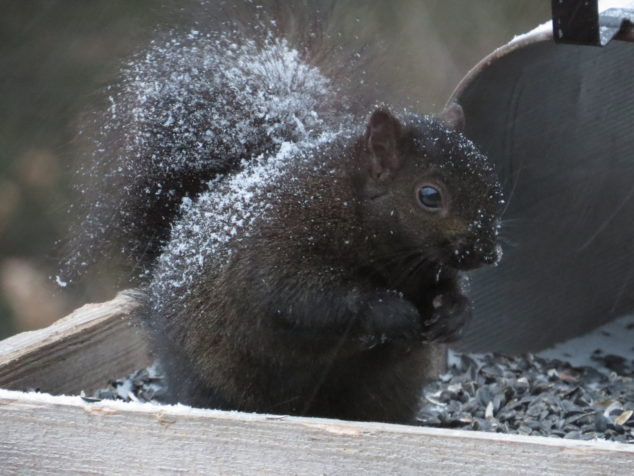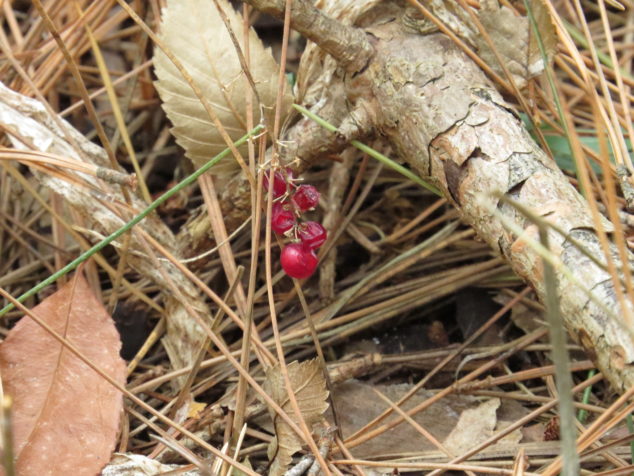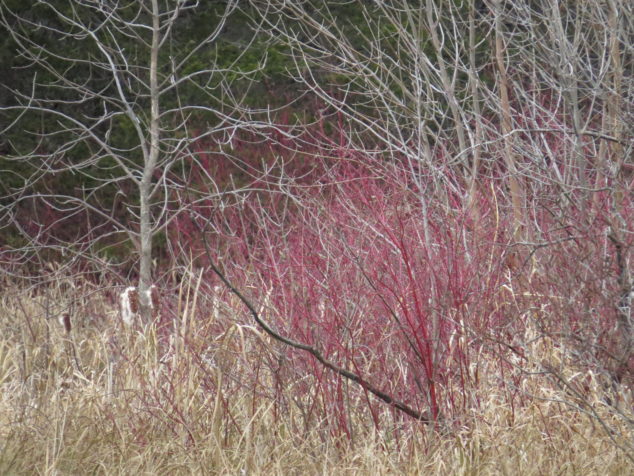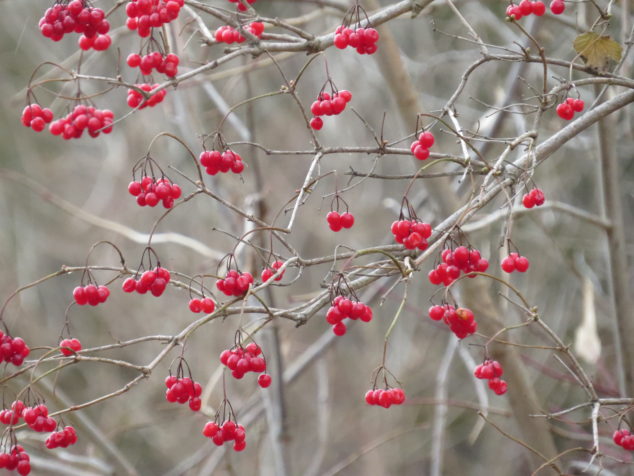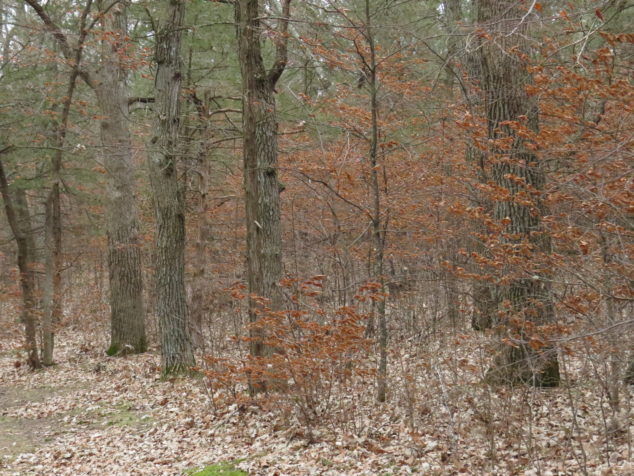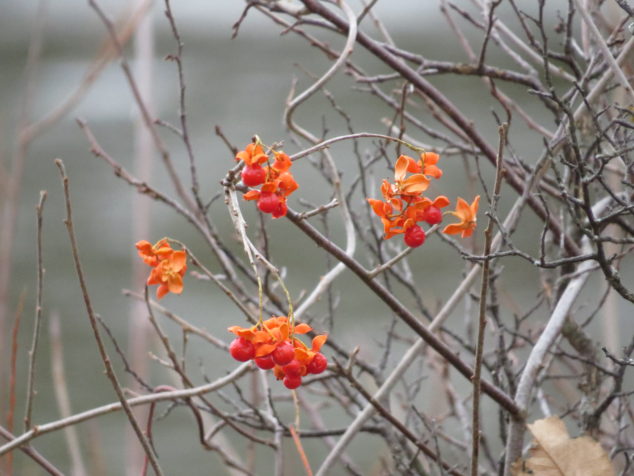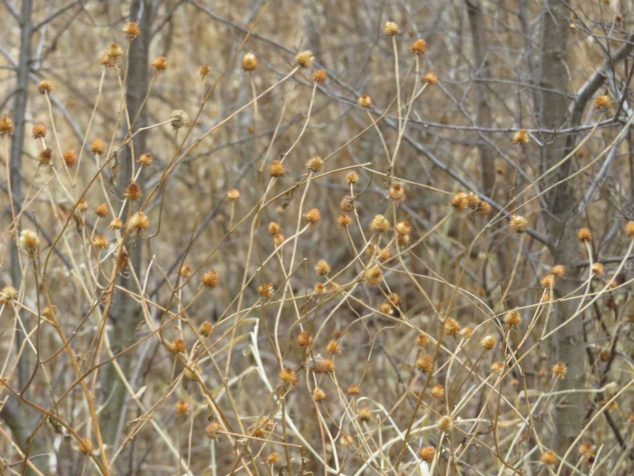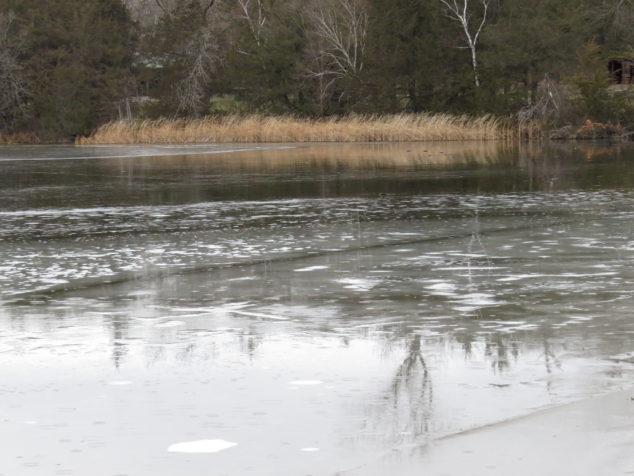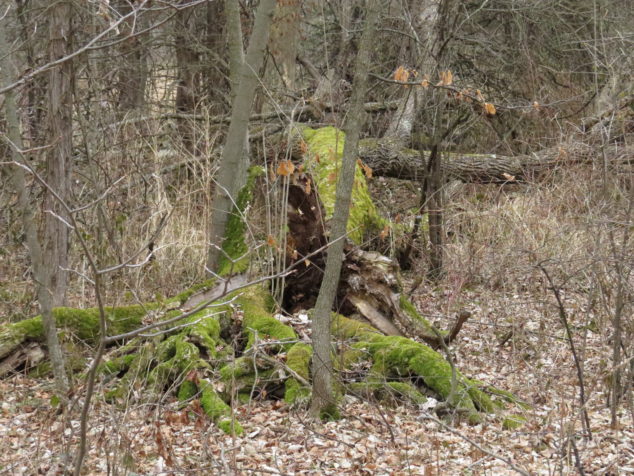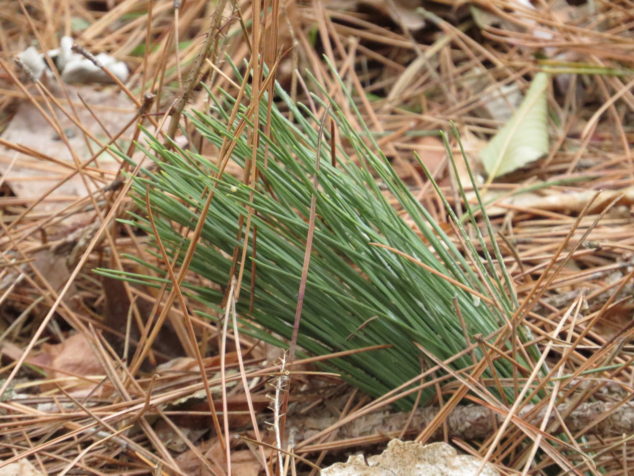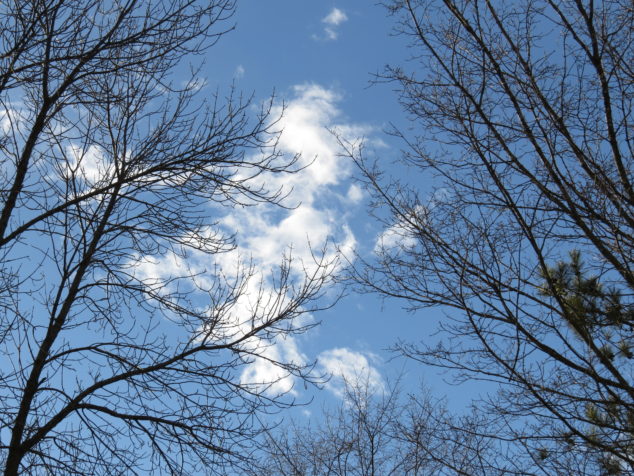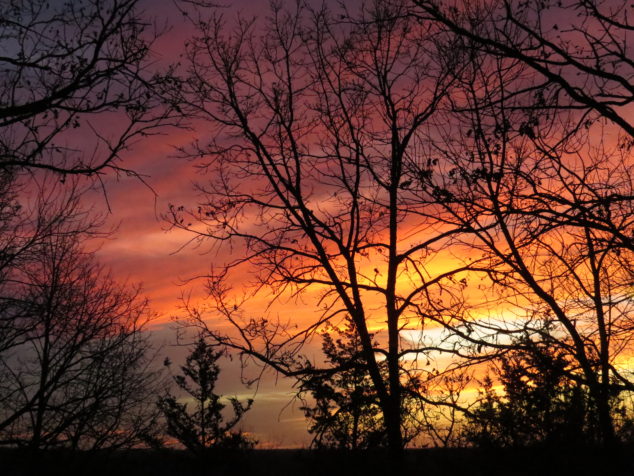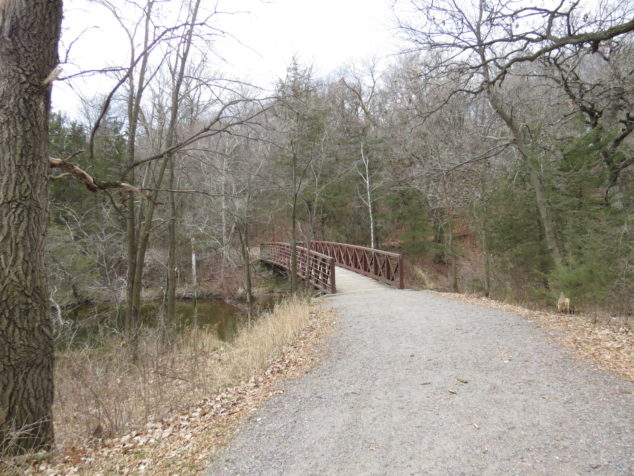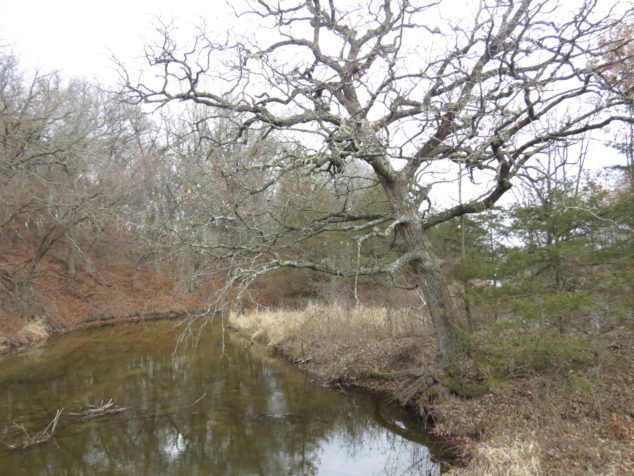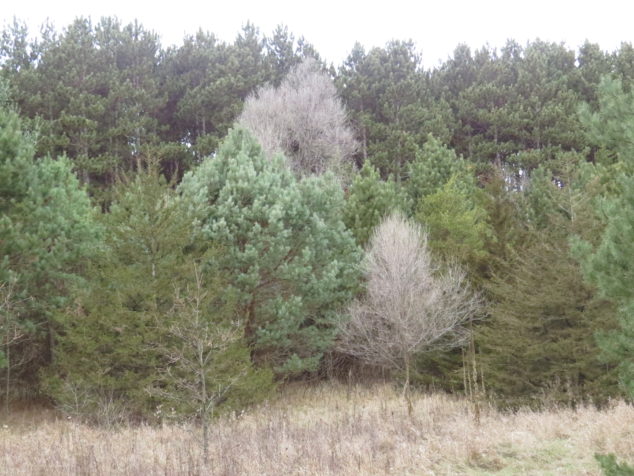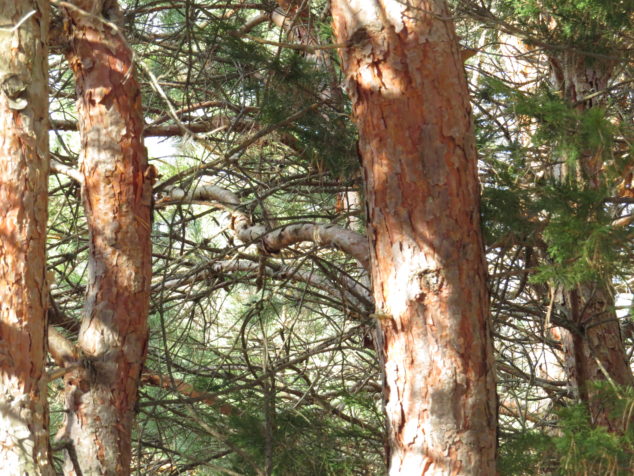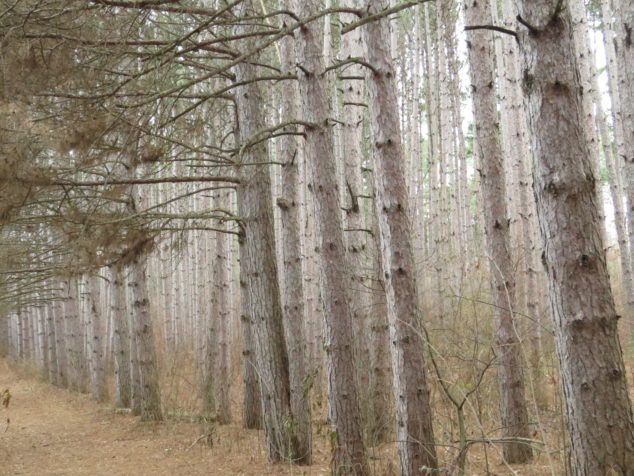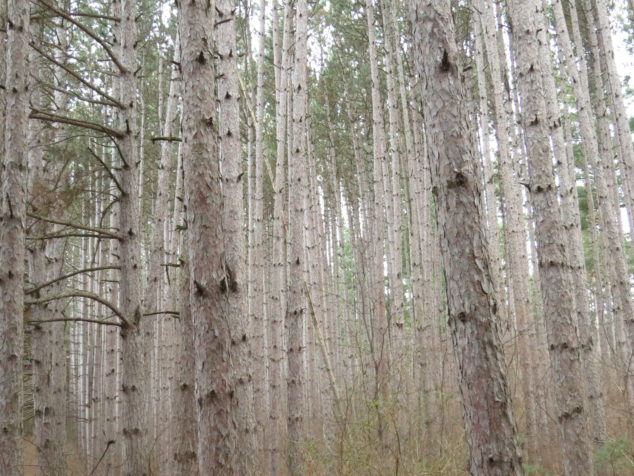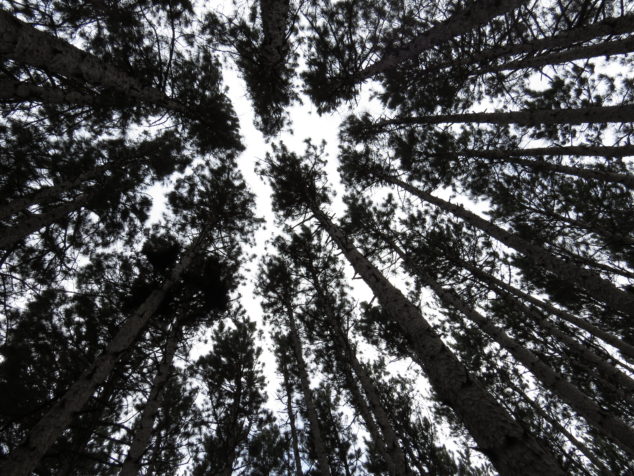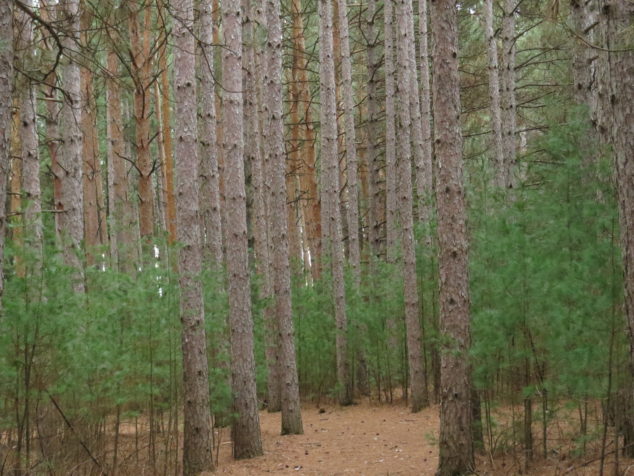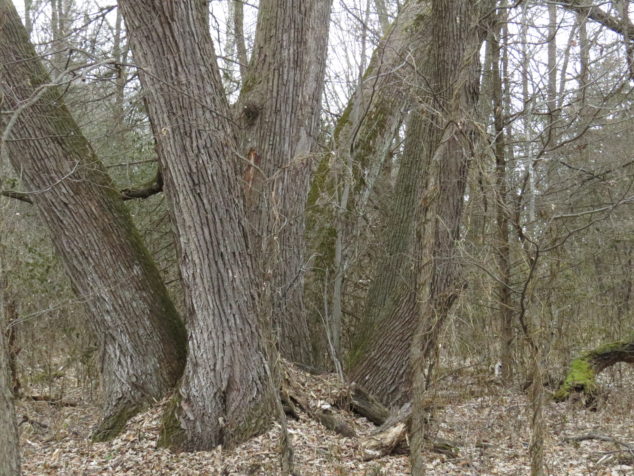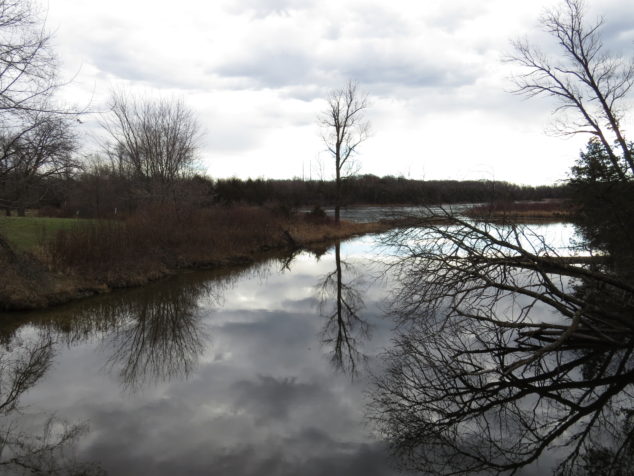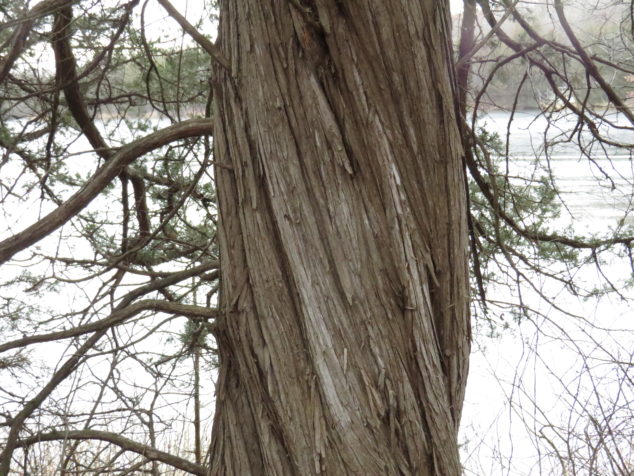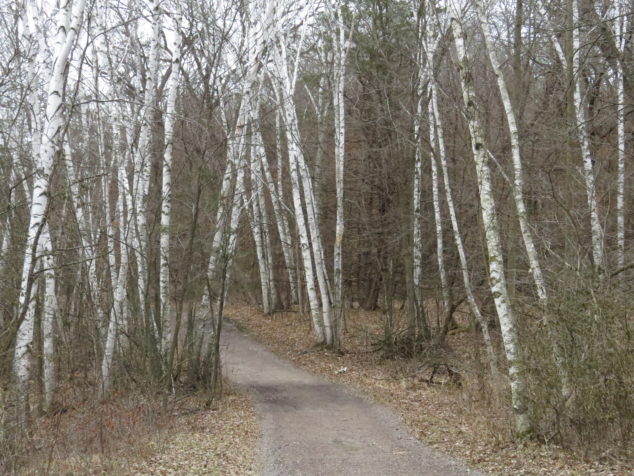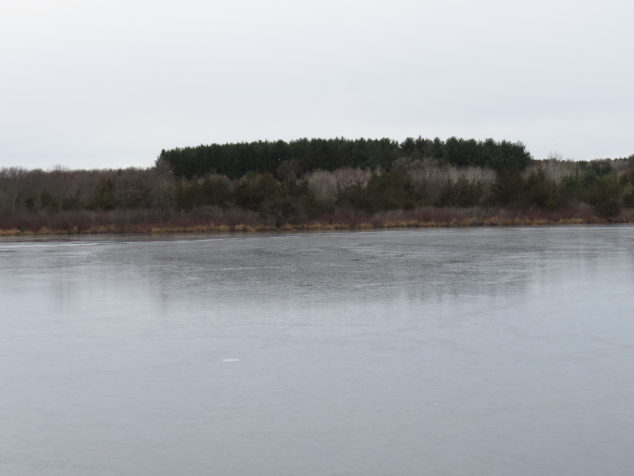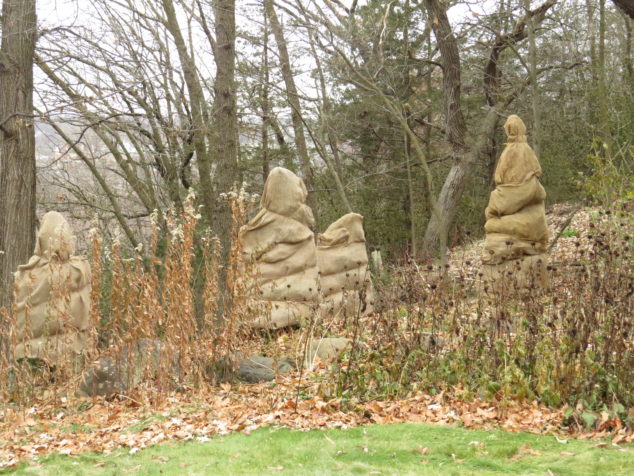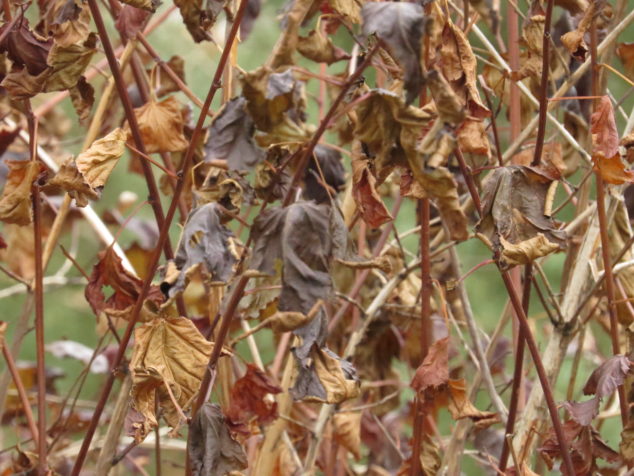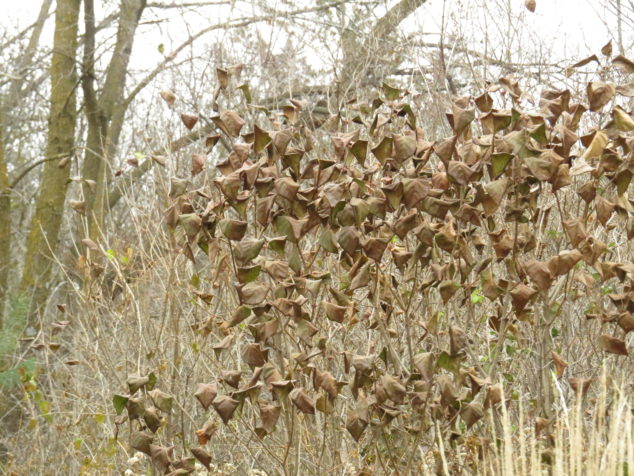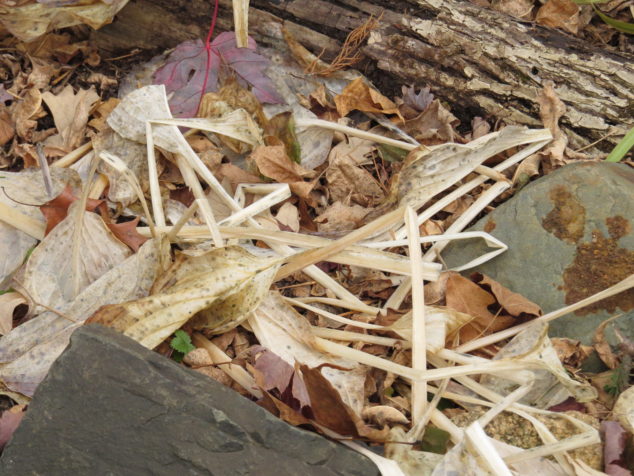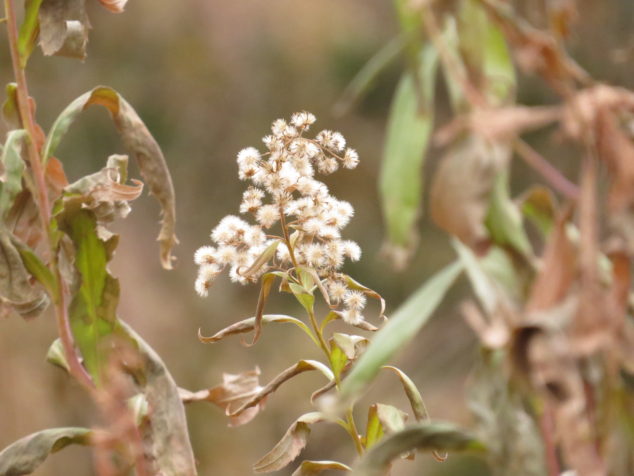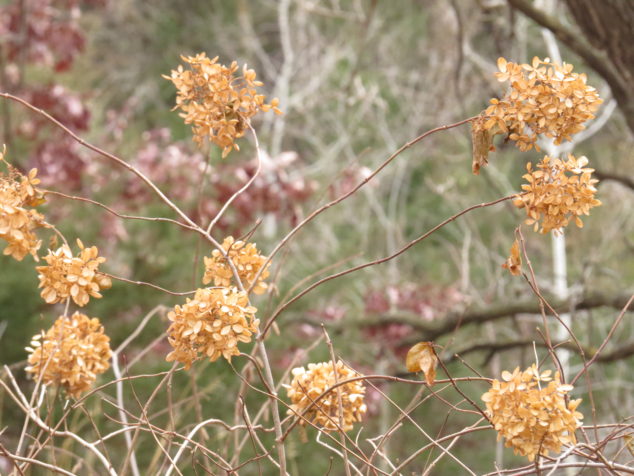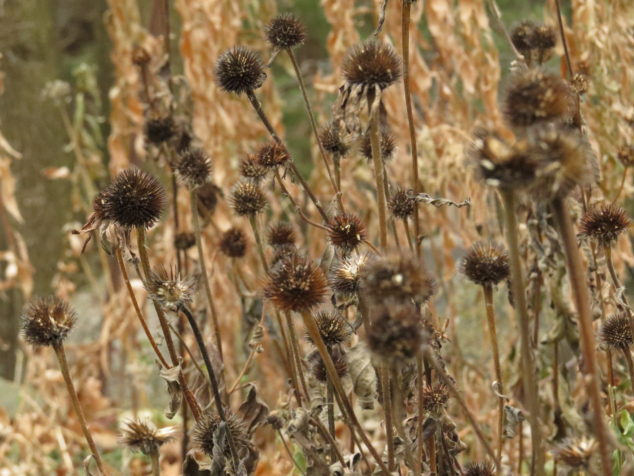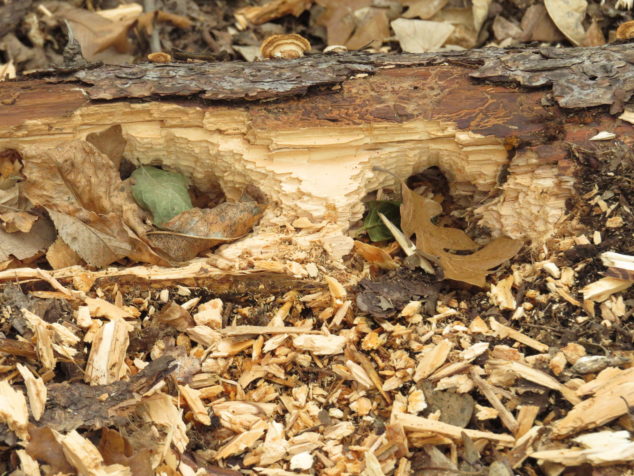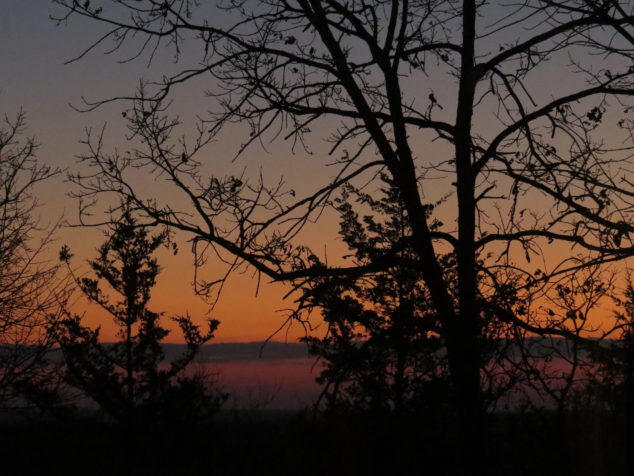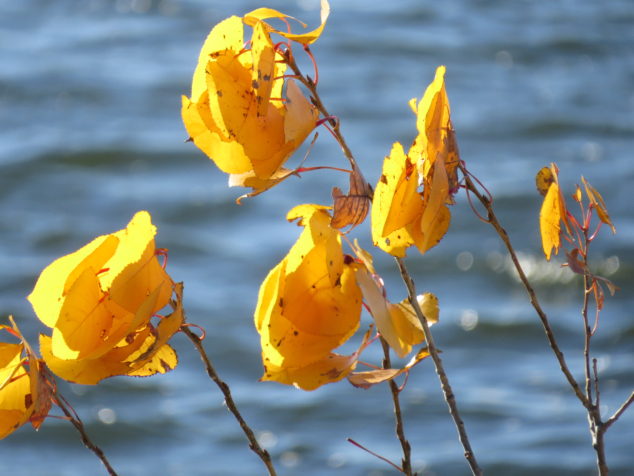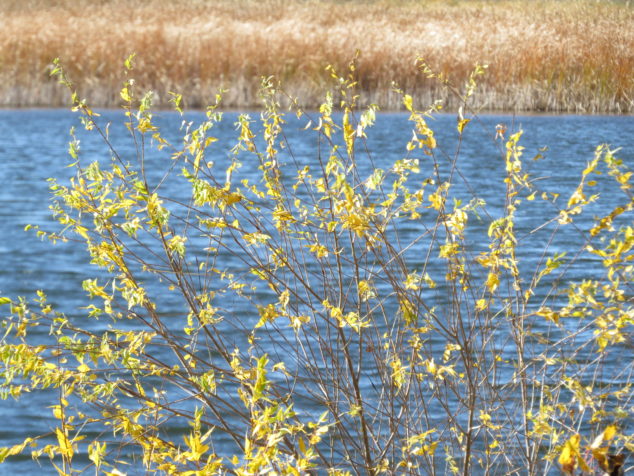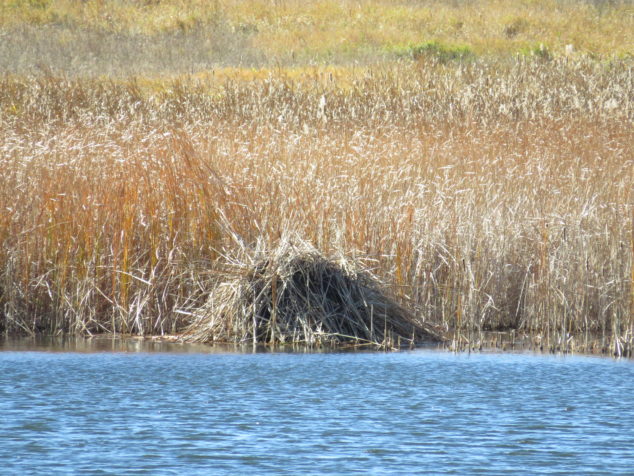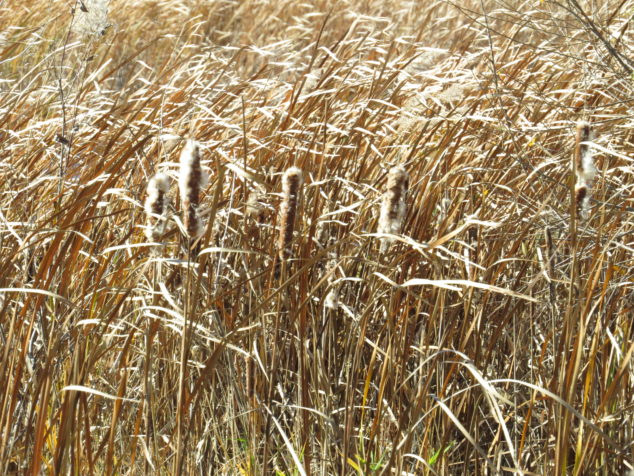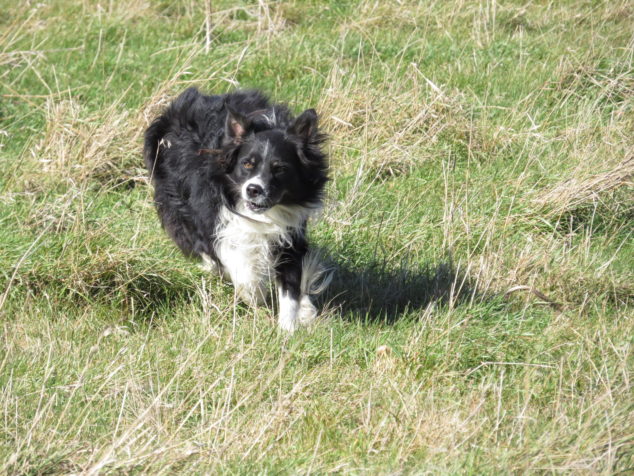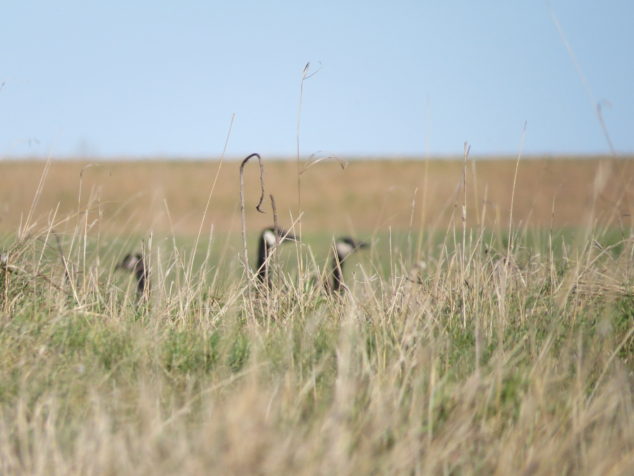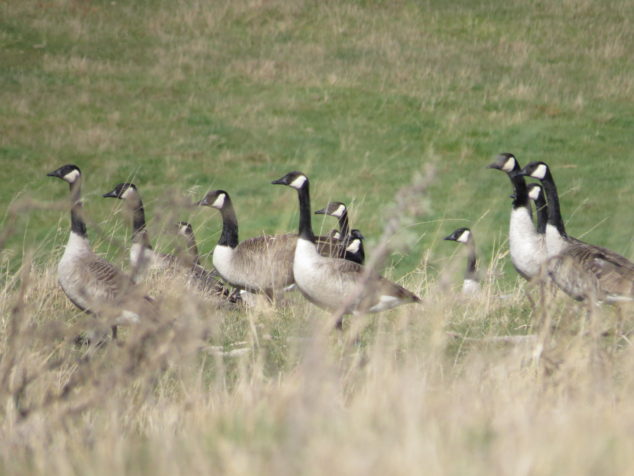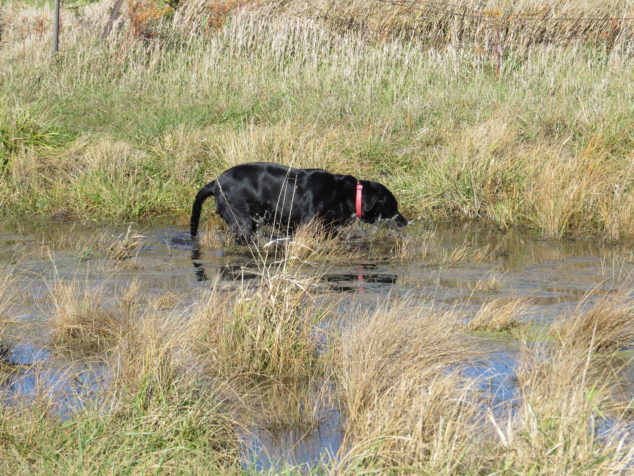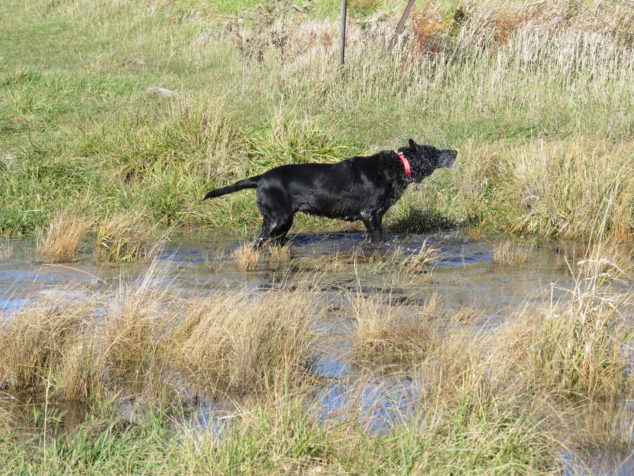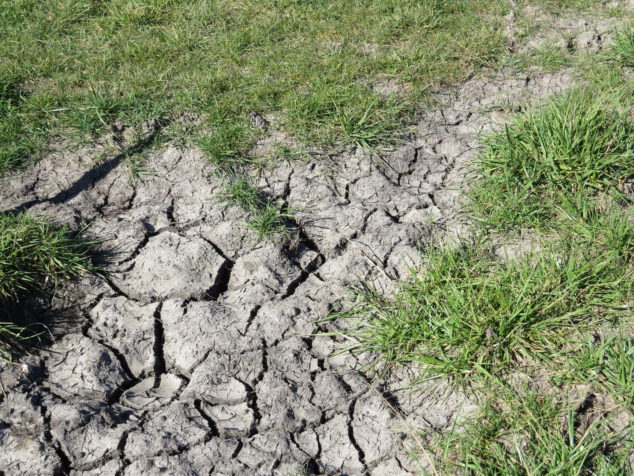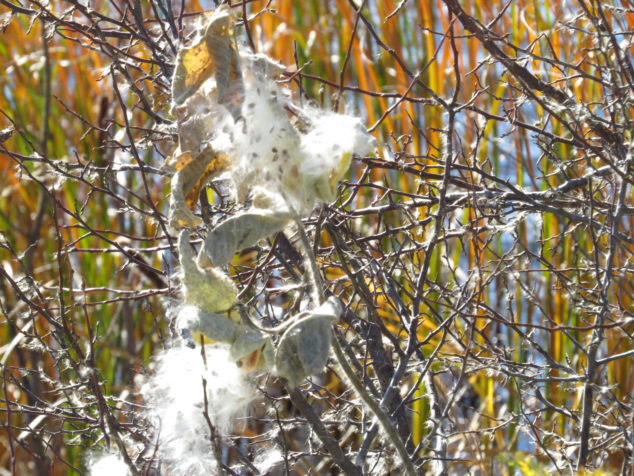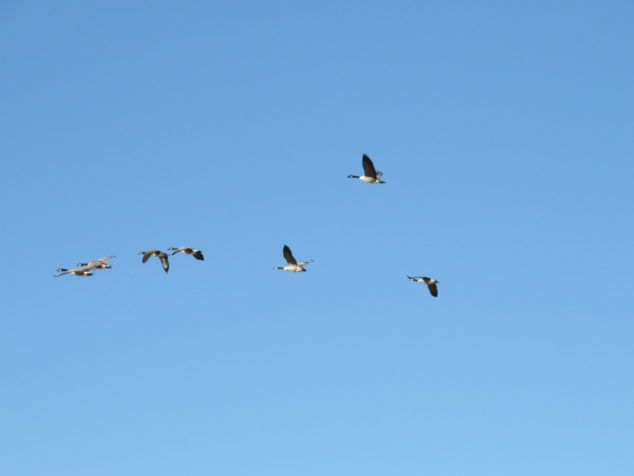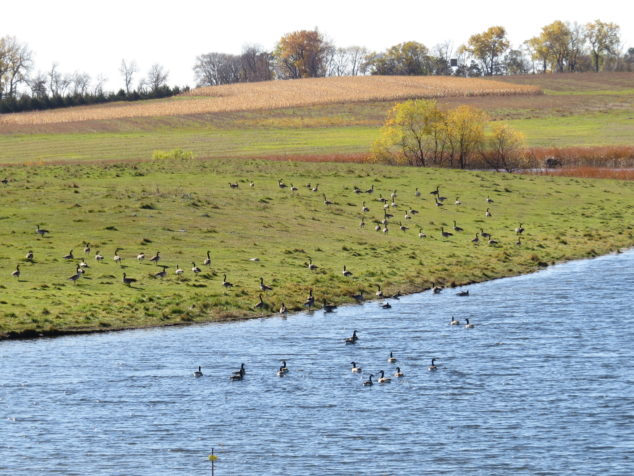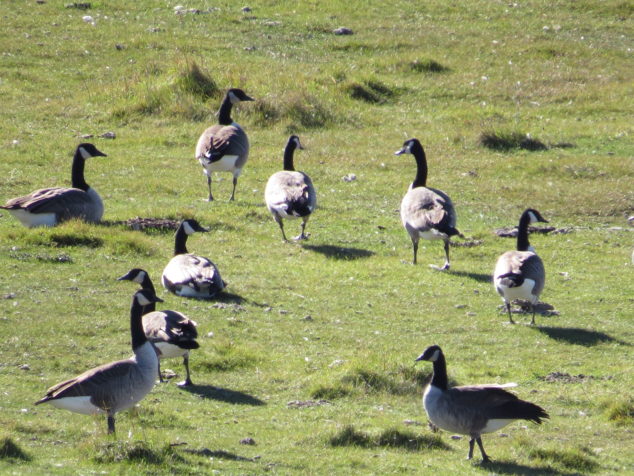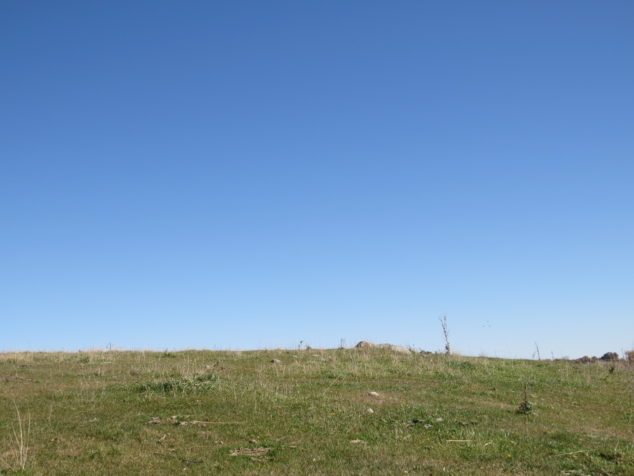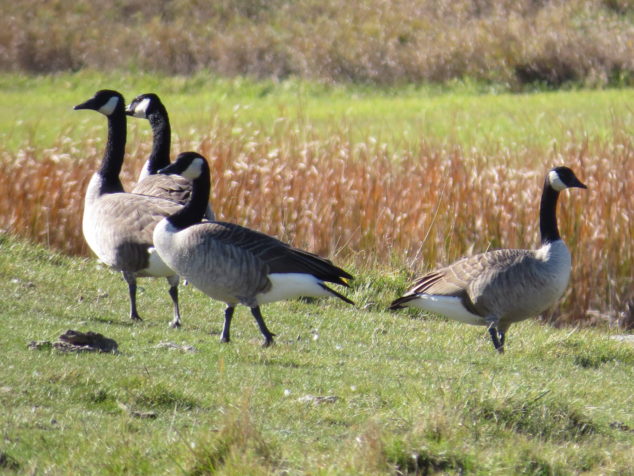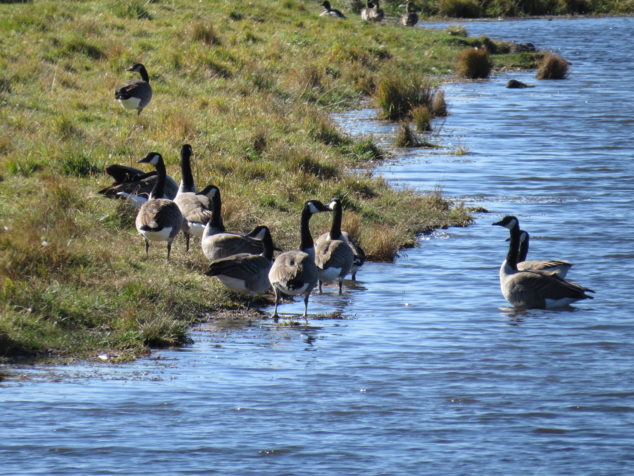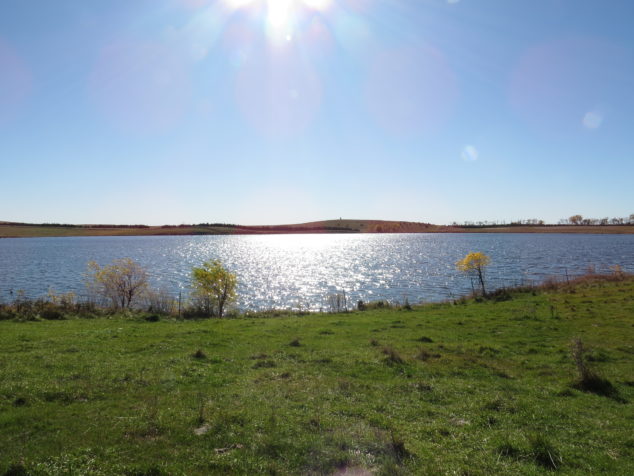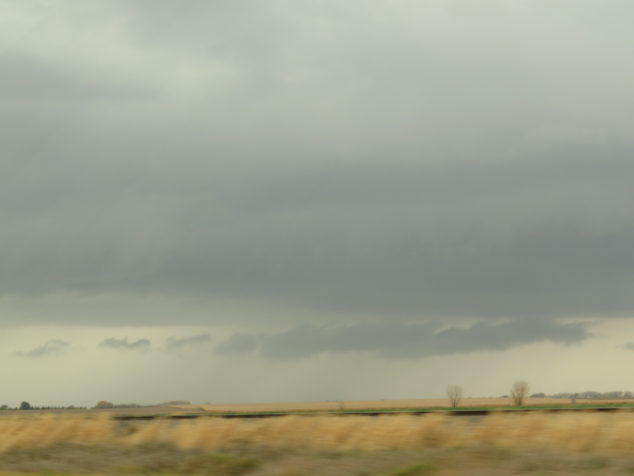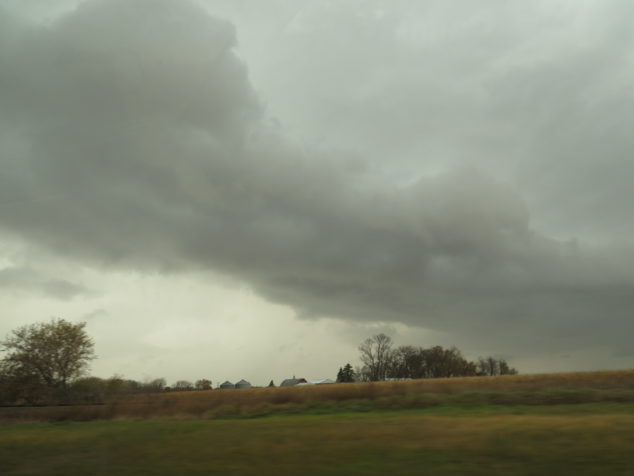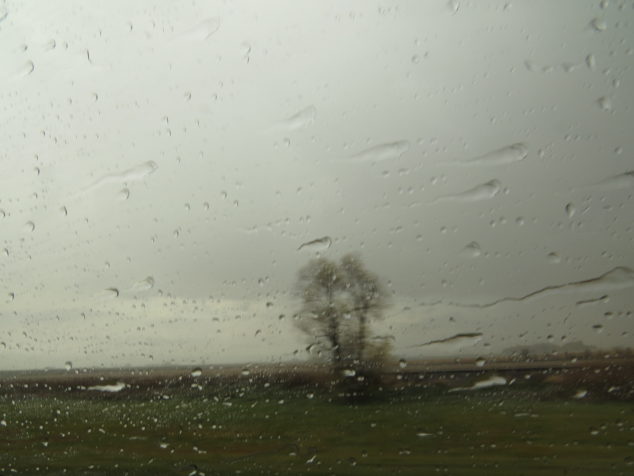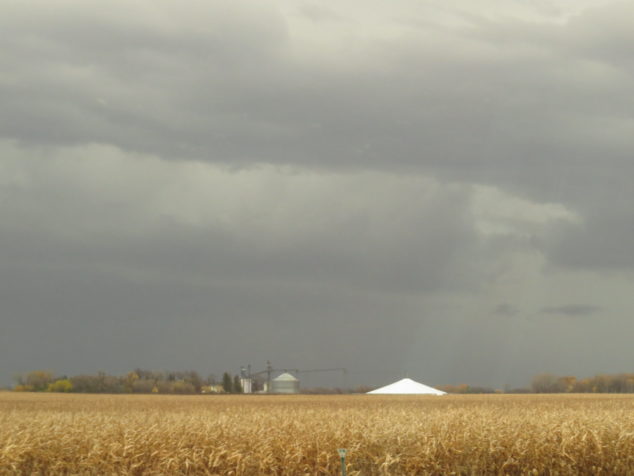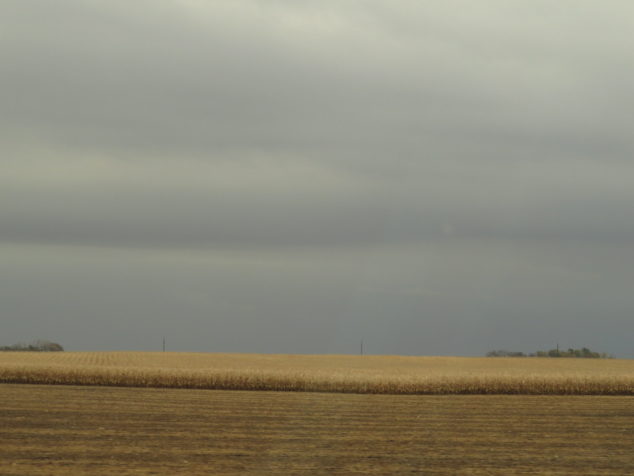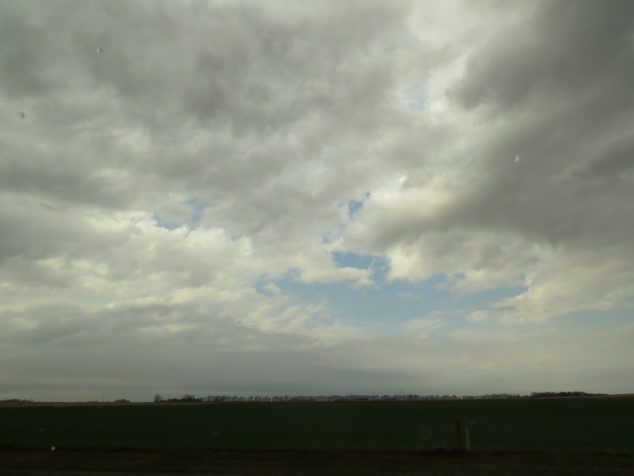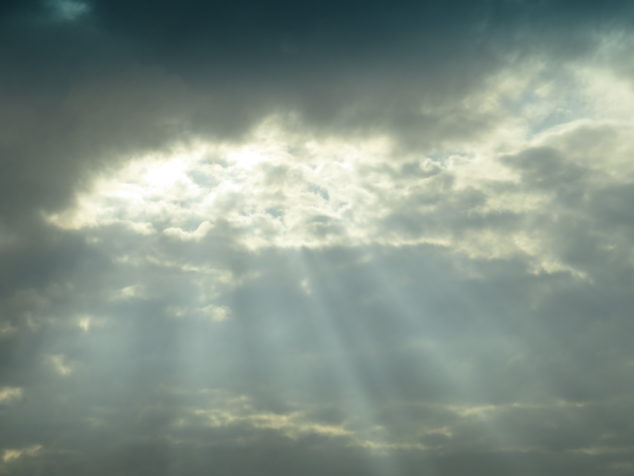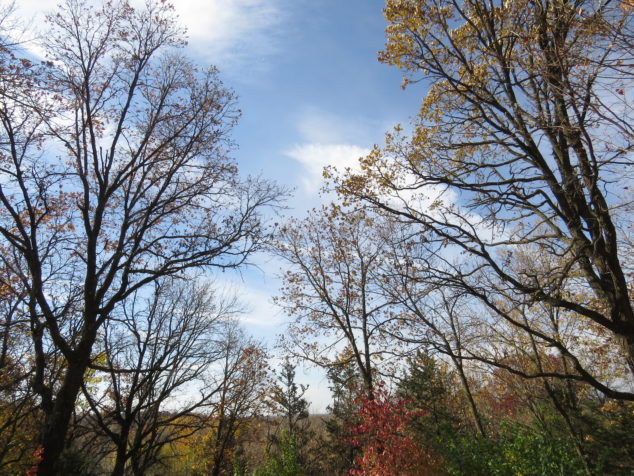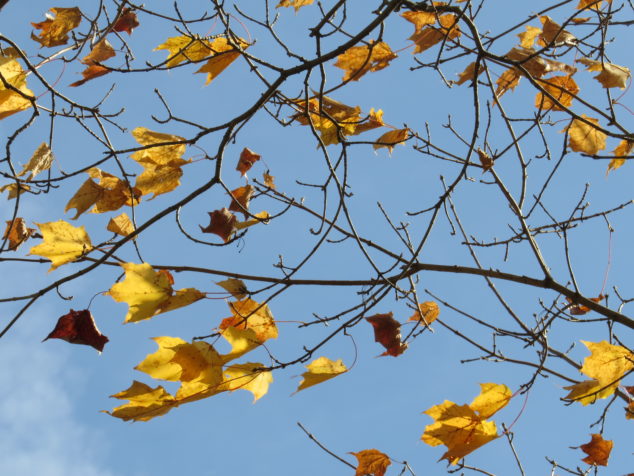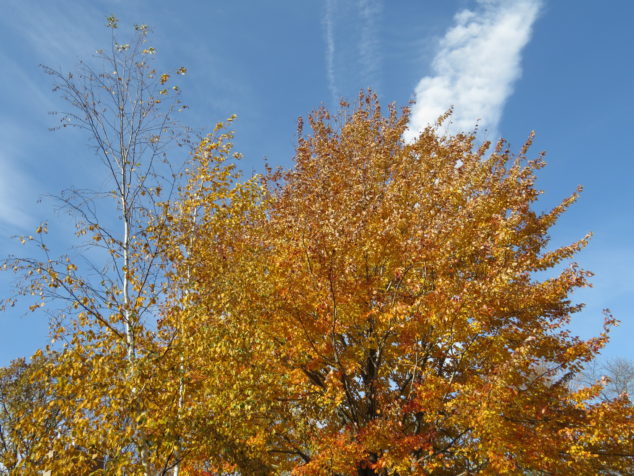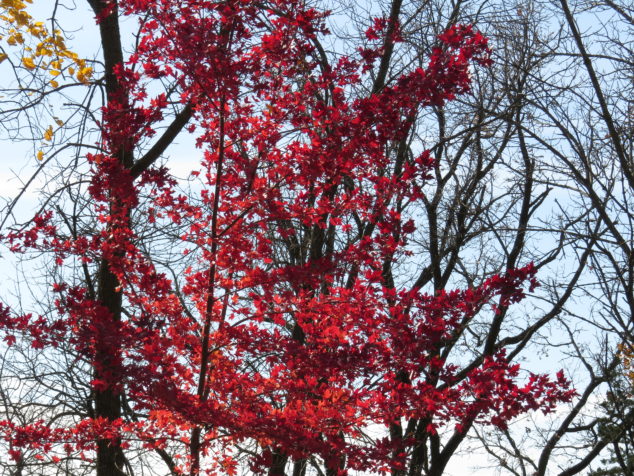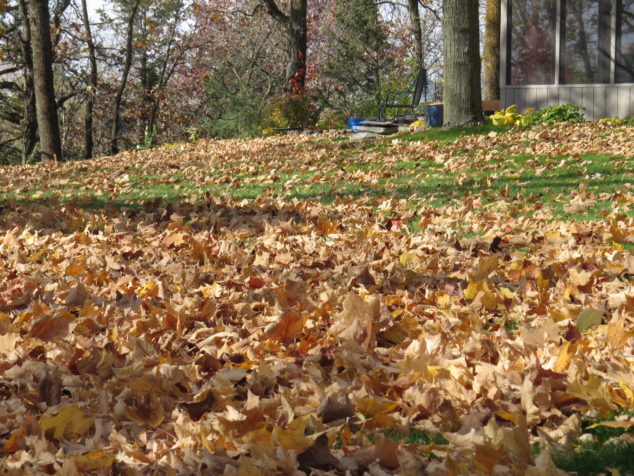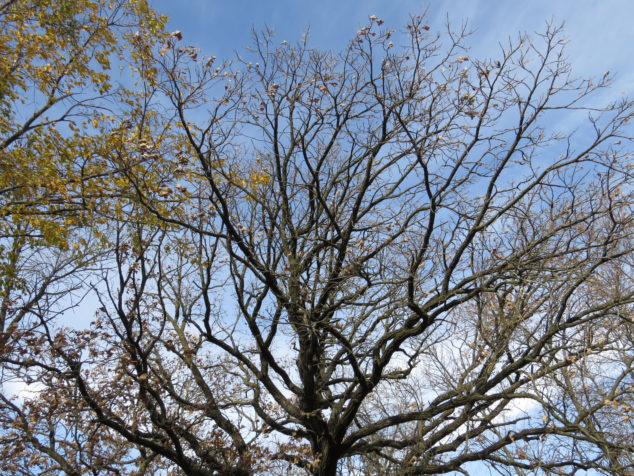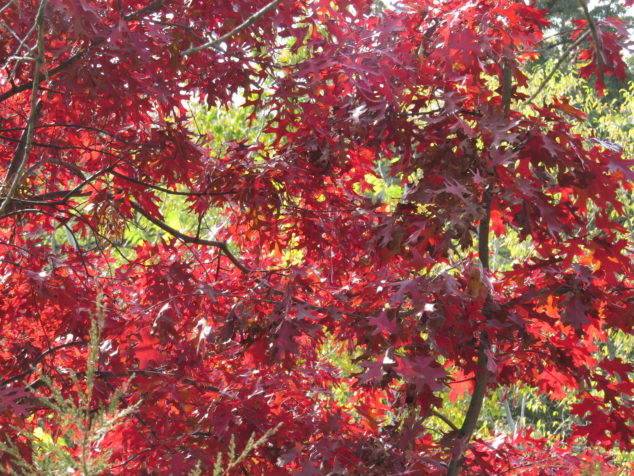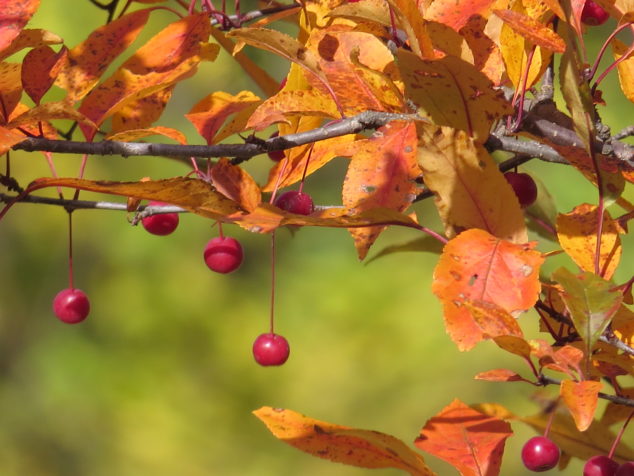It is a rough road that leads to the heights of greatness. –Lucius Annaeus Seneca
After our easy way of exploring the Saint Croix River on a paddlewheel boat, we picnicked beside the River to renew our energy for the afternoon. The paddleboat company, the town of Taylors Falls, and Interstate State Park seem to be intertwined. In fact, we started our hike by walking up one of the hilly side streets after crossing the one, busy main street through town. We passed an old railroad depot that I thought had been moved up there, but then I realized that we were hiking along the abandoned railroad way.
It soon became evident what a marvelous engineering feat it was to build a railroad through these bluffs!
We came to a place in the woods where the old railway had continued over a steep ravine on a bridge long gone except for some concrete pillars that now had colonies of wild ginger strewn at their feet.
We descended the wooded ravine, and at the bottom, the trail diverged—and we chose the hard way, the scenic way according to our guide Aaron Brake who had hiked here before. And so we followed another ravine and began the winding ascent to the very top of the bluff.
In the creek bed at the bottom of the ravine were shiny, glistening rocks of basalt.
Fallen trees created bridges of varying size and structure.
We climbed and climbed and though we were in the shady woods, the warm, humid day and exertion caused me to sweat like crazy. “I never sweat this much,” I exclaimed a number of times, and the only response I got from Emily was, “You need to up your workouts, Mom.” Finally we got to the top of the bluff and saw the River way down below.
On the trail down we explored more of the sandstone bluffs. One place was called Curtain Falls that now only flows after heavy rains and snow-melt.
Living on a steep, rocky bluff is a hard way for a tree to survive. I was amazed at the survival strategies we saw from some of the plant life, like this tree root scaling the rocky cliff, clinging to any soil it could find.
The way down was ‘easier’ than climbing to the top but was in no way easy. There were many places where wooden stairs helped us get down the steep rock faces.
We arrived at the campground of Interstate State Park—the parking lot and camping spots were full on this Labor Day weekend. But our hike wasn’t over yet—the trail continued along the River, through trees and over rocks, back to the entrance of the park where we had boarded the boat earlier in the day. Now we could see the River from the top of the rock cliffs adjacent to the water.
Rock climbers are welcome at the park, and we saw many ropes and climbers. That’s a hard way of getting up and down the cliffs!
It was beautiful hiking along the rocky cliffs among stately pines, wild blueberries, and various types of ferns. What a different perspective of the Saint Croix River we had from the edges of the huge rocks compared to floating down the middle of the River.
By the time we returned to the entrance of the park, my feet hurt, my legs were sore, and I wanted to sit down for a while. When I polled the young twenty and thirty-year-olds about the difficulty of the hike, they proclaimed it ‘moderate.’ I had the word ‘challenging’ in my mind, but chalked that up to our 30-year age difference and my need to ‘up my workouts.’ I’m glad we took the hard way, the rough road, the scenic way. It really was so beautiful, and it impelled me to exert and sweat and do ‘the work.’ It led us to the heights of that scenic River and the greatness of Nature. There are times in our lives when the hard way is presented to us, when we don’t have a choice, no matter how badly we want an easy option. Marie Curie said, “I was taught that the way of progress was neither swift nor easy.” So what do we do? We anchor our support ropes, take it slow and easy, use the steps and bridges to get us down the steep parts and over the ravines, and we do the work. We make progress, we do what is right, and in our own way, we are led to greatness.
After the easy way and the hard way, we ended our day with the ancient way…to be continued…
